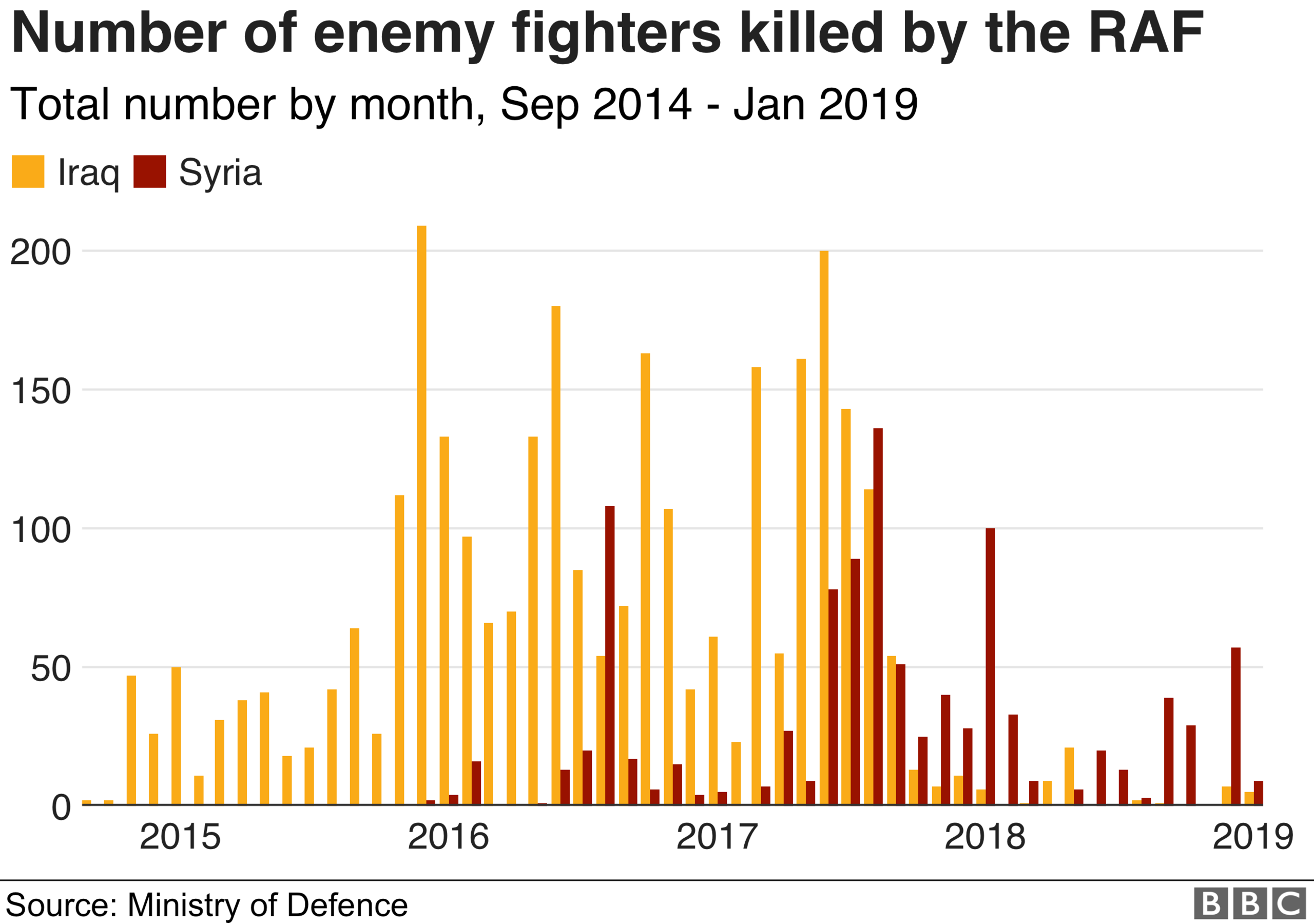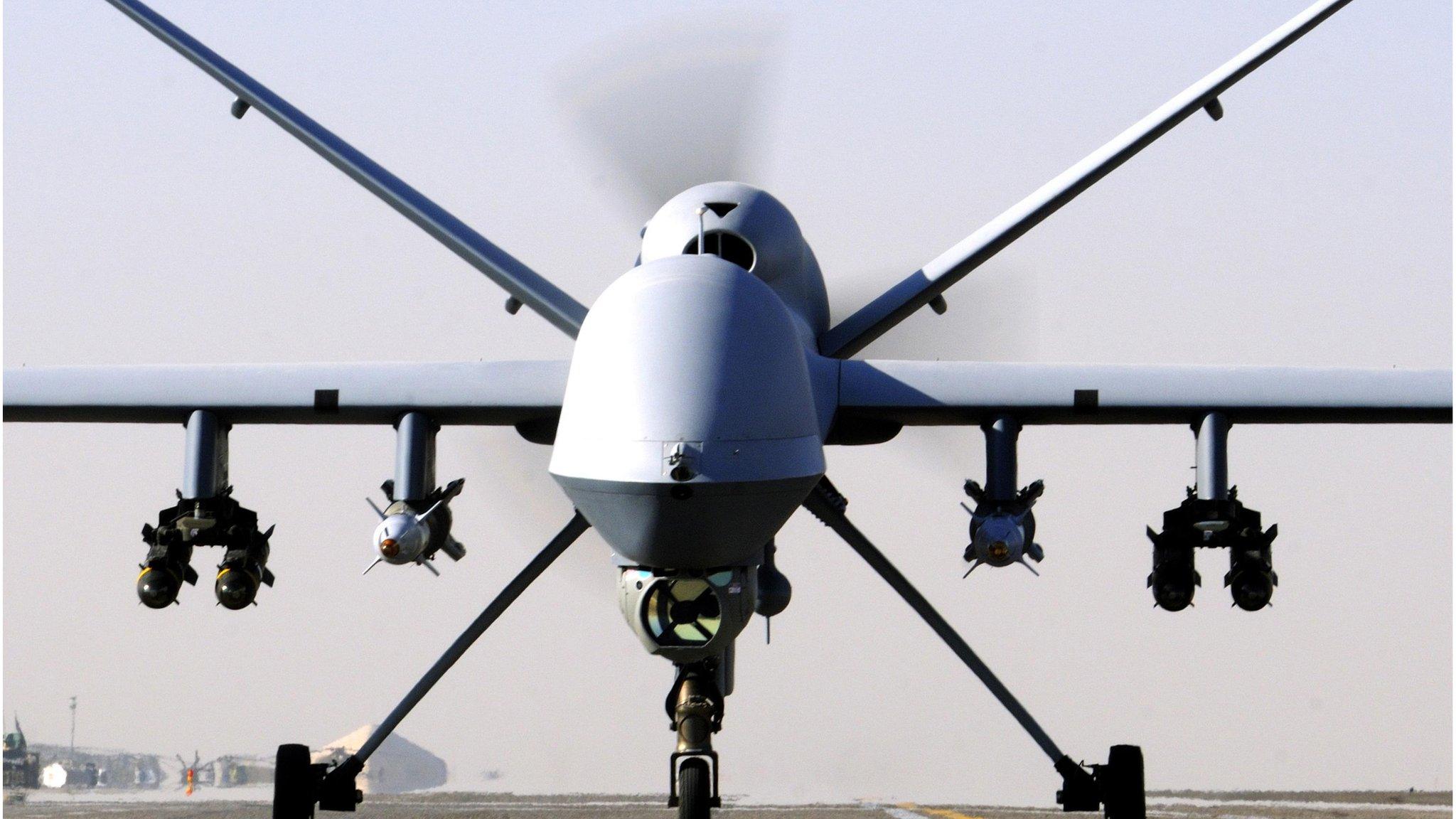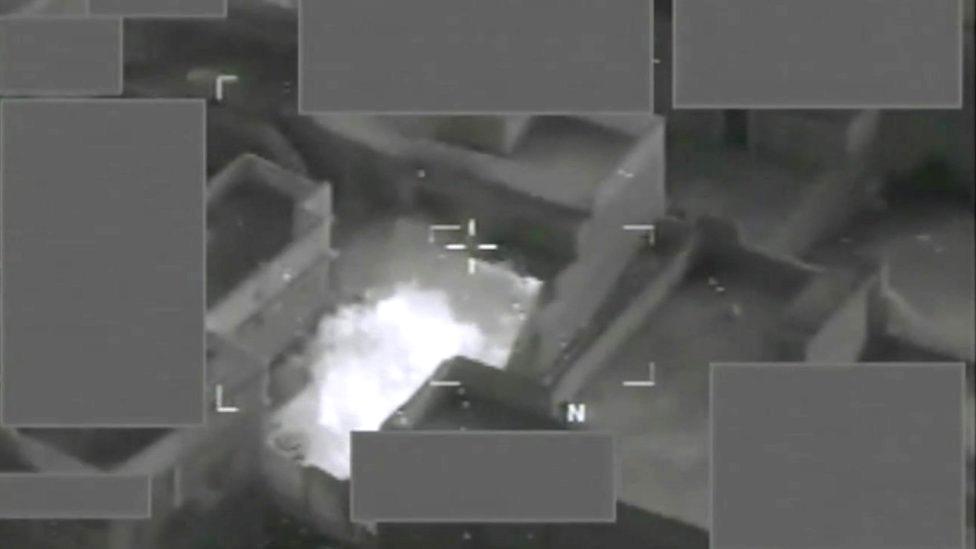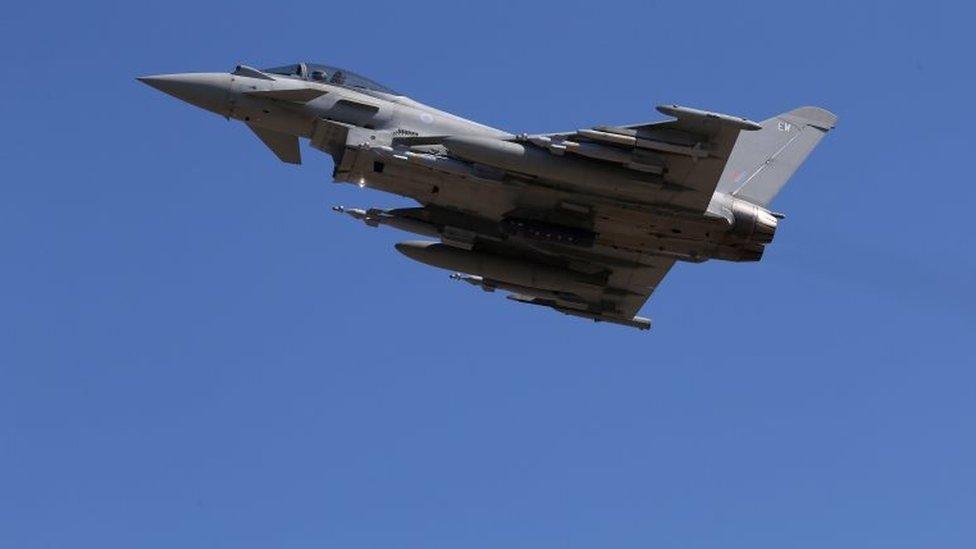RAF killed '4,000 fighters in Iraq and Syria'
- Published

Mosul was hit by bombing raids and retaken from IS
The RAF killed or injured 4,315 enemy fighters in Iraq and Syria between September 2014 and January this year, the Ministry of Defence (MoD) has said.
Yet the MoD says only one civilian was killed in the airstrikes, according to figures released to the charity Action on Armed Violence (AOAV).
Of those harmed, 4,013, or 93%, were killed, and 302, or 7%, were injured.
The MoD said its data came from "the best available post-strike analysis" - video and photos taken from the air.
The data from the MoD, obtained following a Freedom of Information request from AOAV, says:
In Iraq, 2,994 were killed and 235 wounded
In Syria, 1,019 died and 67 were hurt
They were killed by bombing raids from Typhoons (37%) Tornados (31%) and Reapers (32%)
But the AOAV, a research charity, says it believes civilian deaths have been under-reported, as 1,000 targets were hit by the RAF during its bombing campaign in the cities of Raqqa and Mosul.
The US coalition, of which the UK is a member, say they conducted a total of 33,921 strikes between August 2014 and end of January 2019, and at least 1,257 civilians have been unintentionally killed by during this period.
Airwars, an organisation which tracks civilian deaths, believes between 7,500 and 12,077 non-combatants are likely to have died over the same period.
Allow X content?
This article contains content provided by X. We ask for your permission before anything is loaded, as they may be using cookies and other technologies. You may want to read X’s cookie policy, external and privacy policy, external before accepting. To view this content choose ‘accept and continue’.
The one civilian casualty the UK has said it was responsible for would amount to just 0.09% of all of the coalition's civilian casualties.
AOAV's executive director, Iain Overton, said: "The RAF's claim of a ratio of one civilian casualty against 4,315 enemies must be a world record in modern conflict."
More should be done to improve transparency about casualties, he added.
Lydia Wilson, research fellow at Oxford University's Centre for the Resolution of Intractable Conflict, said it is "absurd" to suggest only one civilian was killed "given the pictures we have from the bombardment of Raqqa, Mosul, and other targets in the Islamic State."
Ms Wilson says Raqqa, which was the capital of the so-called Islamic State, is now "simply rubble".
She said: "I would ask how the RAF came at their numbers; that is, how they distinguish between fighters and civilians when buildings have collapsed on top of inhabitants, and on-the-ground, independent reporting is impossible."

Analysis
By BBC Defence Correspondent Jonathan Beale
These appear to be extraordinarily precise figures, given the limited intelligence and information the UK has had on the ground in both Iraq and Syria.
The MoD says the information is based on the "best available post-strike analysis".
That often means relying largely on video and photos taken by aircraft flying high above the battlefield.
It's not an exact science.
The imagery can provide a lot of detail, but it cannot eliminate uncertainties. Two people looking at the same imagery can come to different conclusions.
Nor can aircraft sensors and cameras see through buildings.
There have been a number of reported incidents when civilians have been killed hiding in buildings - unseen by the aircraft flying above.
The RAF insists it's taken extreme care to avoid civilian casualties and that this has been the most "precise" air campaign in history.
But history also suggests that "body counts" should be treated with caution.



The UK took part in bombing against the group calling itself the Islamic State in Syria and Iraq as part of a coalition of 75 countries that came together in 2014.
The coalition also included forces from Australia, Bahrain, France, Jordan, the Netherlands, Saudi Arabia, Turkey and the United Arab Emirates.
It carried out more than 33,000 air strikes.
In 2017, the BBC's Jonathan Beale spoke to RAF crews about the challenges they face in avoiding civilian casualties in Iraq and Syria
An MoD spokesperson said the air campaign had been the most "transparent" in history, with details of the more than 1,700 RAF air strikes, along with confirmation in March 2018 when a civilian was killed.
They said each strike was reviewed in detail to ensure it achieved its objective, including whether there had been any civilian casualties.
All missions complied with international humanitarian law and were carefully planned to minimise the effects on civilians, they added.
They said: "After every British airstrike we conduct detailed battle damage assessment, which thoroughly examines the outcome of the strike against its target, be it fighters, weapons, or bases.
"This assessment also looks very carefully at whether or not there has been any civilian casualty or damage to civilian infrastructure."
- Published2 May 2018

- Published1 May 2018

- Published15 April 2017

- Published29 June 2017
